The rounds of wood are obtained by cutting the log perpendicular to the center line. This is not the usual way of sawing wood because, when cut in this way, the logs almost certainly crack during drying. It is almost impossible to get a whole round without certain treatments and subterfuge. And yet, there are all sorts of objects made from logs, even table tops. Here's why wood cut in this way cracks so much more, and how whole rounds can still remain after drying.
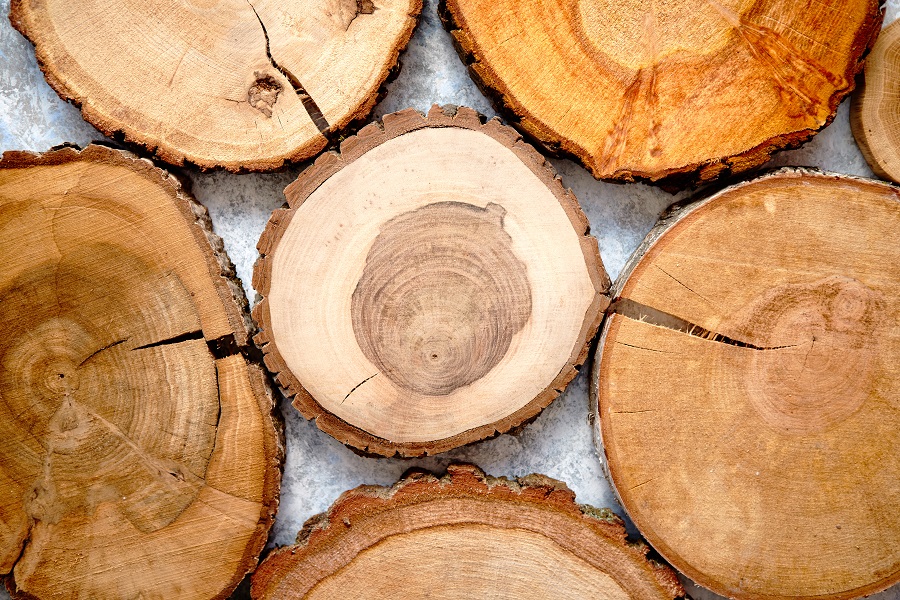
Large and different contraction in the tangential and radial direction causes stresses leading to cracking
It all starts from the different behavior of wood in the three directions - radial, tangential and along the grain - during contracting caused by drying (water coming out of the wood). In normal sawn wood, the most important dimension is along the grain. In this direction the shrinkage is smallest. Even if shrinkage is important in the radial and tangential direction, the effect is negligible because the dimensions of the wood in these directions are small. Some trace can only be seen at the ends of the lumber and the ends of the cabinets where the shrinkage stresses are discharged.
In the case of the roundels, the size along the fiber is small, the important ones being in the tangential and radial direction. These cause the roundlets to shrink at the water outlet, but in different ways. Tangential shrinkage causes the roundness to shrink along the circumference and can reach up to 10%. Radial shrinkage causes shrinkage in the direction of the radius and can be up to 2 times smaller than tangential shrinkage.
Imagine a annual ring from which the water exits so that 10% contracts in the tangential direction and only 5% in the radial direction. Tensions and imbalances arise in the wood mass, and this difference must be compensated for somehow. This is how the crack appears and rebalances the system. The smaller the difference between the two contragions, the lower the stresses. This is a species characteristic. Therefore, under the same conditions, some species crack more and others less. The elasticity of the wood is also important because it helps to compensate for stresses. At small differences between the two shrinkages, an elastic wood manages to compensate for the tension and remains whole, whereas a hard wood cracks.
One factor that accentuates these stresses is the large number of fiber ends. Through the sectioned fibers water comes out quickly, which leads to rapid and different shrinkage in the two directions. In order to reduce stresses, the water outflow from the wood must be reduced and/or controlled.

Methods to limit splitting of log slices
There are no miracle methods that guarantee total crack elimination. Working with rounds will always have a higher risk of cracking than wood cut along the grain. However, there are ways to limit cracking by reducing stresses and the rate of water outflow. The choice of species is also important, as logs made of resilient wood with a small difference between radial and tangential shrinkage are much more likely to dry without cracking.
Reducing tensions. As we have seen, the stresses relate to circumference, radius and contraction in these directions. We cannot intervene on the dimensions of the circumference, the aim being precisely to keep the roundness intact. But a Irregularly shaped round will crack less than a perfectly round one. If the log or branch is slightly bumpy, wavy and not perfectly cylindrical, the cut rounds are less likely to crack. They need to be treated to control the water outflow, but the results will be better.
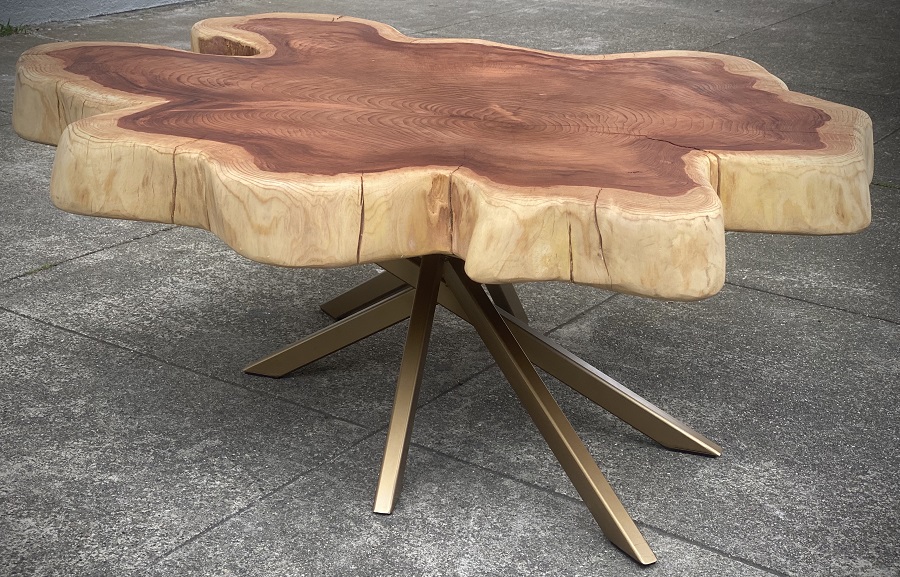
Tensions also occur on the beam. To reduce them the radius can be intervened making a hole in the center of the round immediately after cutting. This will reduce the radius and with it the stresses. The larger the hole, the lower the stresses. On this idea, the smaller the radius (smaller slice) the less it will crack. Drilling has the advantage that it also removes the pith, which behaves differently.
The shrinkage can be reduced if the cut of the rounds is not perfectly perpendicular to the axis of the tree. Slicing the rounds diagonally significantly reduces shrinkage and automatically reduces the risk of cracking. The problem is that the design of the wood will also be altered, and this can be a problem for those who want perfectly round rounds.
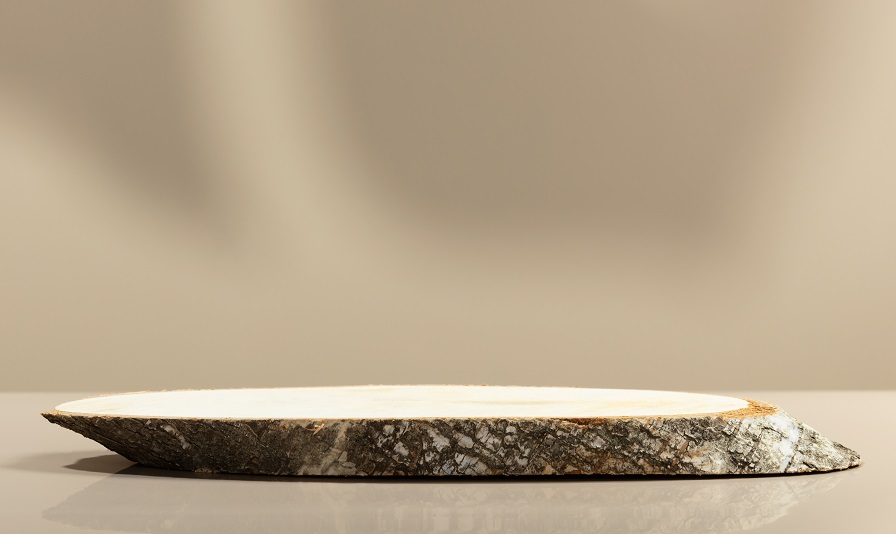
Methods to control the speed and output of water out of wood
It is the control of the water outflow from the wood that is responsible for limiting wood splitting. To be successful, stress reduction methods must be combined with water outflow control. Success is even greater if the wood is free of knots and other defects. Before undergoing the procedures, the wood is sanded on both sides with max. 220 grit sandpaper and sanded. The rounds should be treated immediately after cutting and sanding to reduce the risk of cracking.
Blocking the fiber ends or replacing the water in the wood with other substances are methods to control drying and shrinkage of wood. There are many such methods. The ones below seemed feasible and interesting to me.
Application of a salt paste on the wood surface. A paste made of salt, water, cornstarch and egg white is applied all over the wood. The proportions are quite different from craftsman to craftsman. The important thing is to start with a saturated salt solution. For example, add 1.5 kg of table salt to 4 l of water. Mix well and leave for 3-4 hours for complete dissolution. Then add starch until it becomes a fluid paste similar to oil paints. Finally add 3 egg whites, one at a time, stirring continuously. Do not add the next egg white until the first one has been fully incorporated into the paste. This paste is applied all over the wood (front, back, edge) and left to dry. The rounds are placed against a wall so that there is a draught for drying, out of the sun and out of the rain. The salt will draw water out of the wood and the paste will prevent the wood from cracking. Drying can take 2-3 weeks, even longer depending on the thickness of the round. The process is finished when the paste on the center of the round becomes dull, faded, and the round is much lighter. This is when the paste, which has become very hard, is removed (a rather difficult process).
Dip the rounds in industrial ethyl alcohol (denatured alcohol). Place the rounds in a bowl and immerse them completely in ethyl alcohol. Place weights on them to keep them immersed. They are kept so for 24-48 hours, depending on their thickness. Cover the pot with plastic to prevent the alcohol from evaporating. After the required time, the rounds are taken out and dried in a sheltered place, out of the sun and rain, but in a draught (leaning against the wall). The water in the wood is thus replaced by the alcohol which then escapes, the tensions created by its escape being much lower.
Dipping the rounds in polyethylene glycol (PEG). It is done in the same way as soaking in alcohol, except that the rounds are left in solution for 2-3 months. During this time the water is replaced by PEG, which does not evaporate but remains in the wood, stabilizing it. The rounds will be heavier in the end because PEG is heavier than water.
The wood can also be immersed in linseed oil, frozen, coated with wax, paraffin or epoxy resin. Here find several methods of treating and stabilizing green wood. Again, water is the problem. And here find methods from carpenters for reducing cracking at the ends of normal sawn timber. Some of them can also be adapted for rounds.
I hope you find the information useful. As always, additions are welcome. And if you have any questions or queries, please leave them below in the dedicated space. I will be sure to reply.




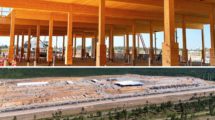





















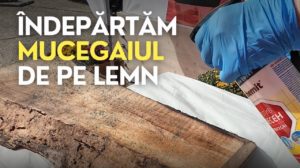








I was hoping you could give us at least a little introduction to the Japanese method called Sewari.
The Sewari method is specific to the drying of beams and poles containing the pith of the tree, not to the drying of roundwood. In order to reduce tension in the wood and avoid uncontrolled splitting, a cut is made in the wood that will take up all the tension. The cut is enlarged (along the length of the beam) as the wood dries. Finally, when it is properly dried, the wood is glued and the beam is thus rebuilt.
I will come back in a future article with details of the method.
Yes it is. I'm referring to using this method to prepare the log before cutting it for rounds. I suspect that they use weaker quality logs. You make longitudinal cuts on relatively straight portions, let the wood dry, insert until sewari and then cut the rounds and you have the whole section. No further treatment is necessary. That's what I mean. Thanks for the conversation...